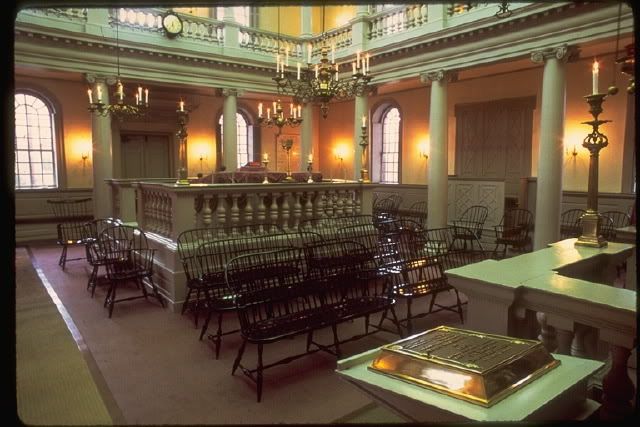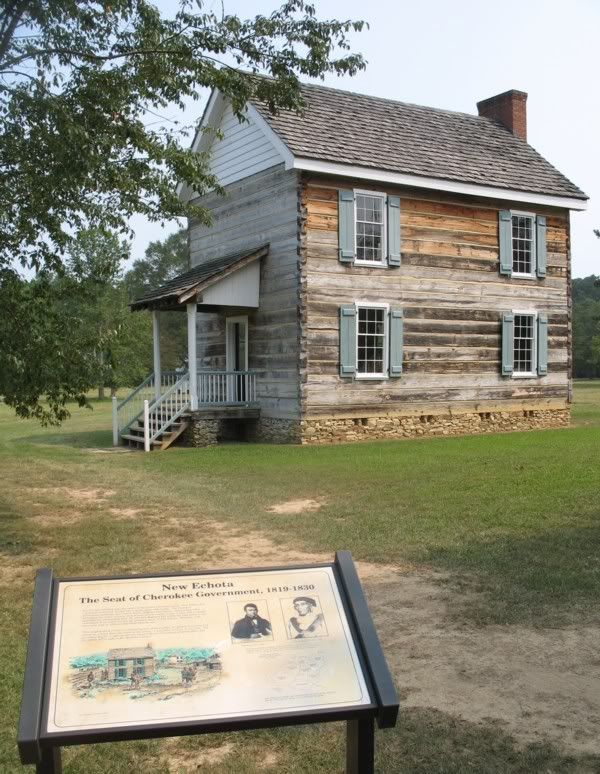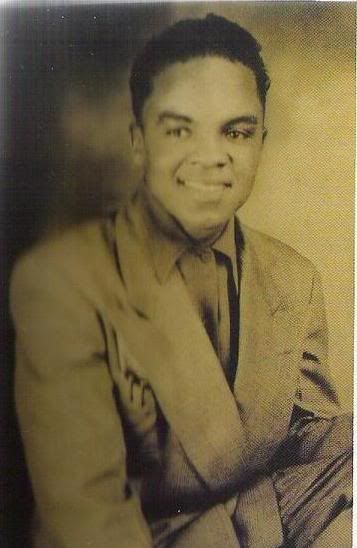Here is some history of those of the Choctaw Native American descent:
From:
http://sciway3.net/clark/freemoors/RedBones.html
Welcome!
Native Americans of South Carolina
Wagons West
A Late Migration of "Red Bones"
From Holmes Co., FL to Rapides, LA
Copyright ©2005, Steven Pony Hill, all rights reserved.
In late 1857 or early 1858 a large number of families left the Choctawhatchee River area of northwest Florida and journeyed west to Rapides Parish, Louisiana. These families, often described as "mixed-bloods" joined an older settlement of Willis, Goins, Perkins and Sweat families to produce what is known today as the "Red Bone" community.
It appears that a smaller group of families left the same area of Florida in1853, but met with less success. The Taylor and Houser families "all of whom claimed to be Catawbas," never made it further than Alabama. (1)
According to oral history the 1850's migration was a "wagon train led by Alfred Mayo." By comparing the 1850 Florida census and the 1860 Louisiana census a fairly accurate assessment can be made about the size and composition of this migration. (2) (3) The majority of families were originally from South Carolina and had settled in Florida in about 1828. Those persons on the "wagon train" were:
" William Bryant: (born 1810 NC), his wife, Mary (b. 1815 GA)
" Bartram Butcher: (born 1822 NC), his wife Elizabeth (b. 1826 GA)
" Benjamin F. Hagan: (born 1820 GA), his wife Elizabeth (b. 1830 FL)
" Stephen Hagan: (born 1825 GA), his wife Emilene (b. 1838 FL)
" Dempsey Fennell: (born 1817 GA), his wife Margaret Turner (b. 1828 FL)
" Major H. Stanley: (born 1825 NC), his wife Elizabeth Perkins (b. 1826 ALA)
" Robert Knight: (born 1833 GA)
" Jane Bartlett: (born 1824 GA)
" Stephen Turner: (born 1795 SC), his wife Margaret J. (b. 1814 NC)
" Alfred Mayo: (born 1792 SC), his wife Catherine (b. 1804 SC)
" Martin Mayo: (born 1820 FL), his wife Rebecca (b. 1820 SC)
" Samuel Mayo: (born 1830 FL), his wife Susan (b. 1840 GA)
" Simeon Martin: (born 1836 ALA), his wife Elizabeth (b. 1836 ALA)
" Anthony Burns: (born 1827 FL), his wife Ann (b. 1828 FL)
(1) R.B.I.A., National Archives, Letters Received, Miscellaneous, 1853, A-172, Brig.-Gen. G.B. Hall to Capt. I.C. Casey about Certain Indians in his County, November 12, 1853.
(2) 1850 Federal Census of Walton County, Florida households 265 & 266
1850 Federal Census of Walton County, Florida households 11, 13, 43, 46, 60, 63, 112
1850 Federal Census of Washington County, Florida household 257
(3) 1860 Federal Census of Rapides Parish, Louisiana households 95, 97, 106, 111, 112, 137, 138, 146, 150, 151, 154, 165
Rev. Joseph Willis, Father of the Red Bones
Copyright ©2005, Steven Pony Hill, all rights reserved.
In the early 1800's a number of small settlements were founded in western Louisiana near the border with Texas, which have perplexed researchers and historians. These isolated communities were called "Red Bones" by the local folk, and their social standing hovered somewhere between whites and blacks. The community members themselves claimed to be Indians, descendants of tribes of the Carolinas. One of the earliest persons to settle this area was the Reverend Joseph Willis, also known as the father of the Red Bones.
Joseph Willis was born between 1755 and 1758 in New Hanover, North Carolina (not far from Robeson County home of the Lumbee Indians). Joseph was born to the Indian slave of Agerton Willis, and so, by law Joseph was also considered a slave. When Agerton died in 1776, his will provided for Joseph to receive his freedom and inherit the entire estate. Unfortunately, Joseph was still a minor and the estate was placed under the control of Agerton's brother, who subsequently objected to a slave receiving any of the property. The will never became legal, and Joseph remained in slave status for another eleven years.
In November 1787, a bill was introduced by Joseph's white cousin, John Willis a member of the General Assembly of North Carolina, entitled "a bill to emancipate Joseph, a Mulatto Slave, the property of the Estate of Agerton Willis, late of Bladen, deceased."1 The bill passed its third reading on December 6, 1787 and Joseph was free. Many years later in Louisiana, Joseph would tell his grandchildren who were tending to him in his last months, that he left North Carolina "with nothing but a horse, bridle and saddle."
Joseph Willis entered South Carolina at the time of the Revolutionary War and served under General Francis Marion, the "Swamp Fox." By 1790 Joseph was living with his wife, Rachel Bradford, in Cheraws County (now Marlboro, Chesterfield and Darlington Counties), South Carolina.2 It was also here that Rachel died about 1794. Joseph moved to Greenville County, remarried to Sarah an Irish woman, and purchased 174 acres.3
In Greenville County, Joseph became more active in the church and joined the main Saluda Church. He attended the Bethel Association as a delegate from Main Saluda from 1794 to 1796. In late 1797 or 98, Joseph made his first trip to Mississippi to spread the Baptist faith. Records show that Joseph had first made the trip west of the Mississippi "in search of Willis Perkins," a Baptist who had settled there earlier.
Joseph Willis has been marked in the history books as the "First Baptist Preacher of the Gospel of Jesus Christ West of the Mississippi River."
By 1833 the Reverend Joseph Willis became pastor of Occupy Baptist Church near Pitkin, Louisiana. This is less than a half-mile from Tenmile Creek. 4 He served as pastor there for 16 years. It was also there that he married his last wife Elvy Sweat, who was many years younger than he. During this time a man named John Phillips recorded an affidavit from Joseph stating that his mother was a Cherokee Indian and his father was English. This affidavit was registered at the courthouse in Alexandria, Louisiana. 5
The Reverend Joseph Willis died on September 14, 1854. He is buried at Occupy Baptist Church cemetery.
Only three years after the death of Joseph, a wagon train from the east led by Alfred Mayo would arrive with more families of mixed-Indian blood. In South Carolina small settlements of mixed-Indian families had been commonly called "Red Bones", and this label apparently followed them west of the Mississippi. These intermarried with the Willis, Sweat, and Perkins families who were already settled, and the 'Red Bone' community of today was founded. 6
Aimuel Willis, youngest son of Joseph Willis
1. At the time this Bill was passed, a "Mulatto" was legally described as "a person of Negro or Indian blood to the fourth degree."
2. Recorded on the 1790 federal census as a family of "All other free persons."
3. Again here recorded as "other free persons."
4. The areas of Pitkin and Tenmile are the home of the "Red Bone" settlements.
5. In Luisianna records, the Willis family is recorded as "free persons of color" and "mulatto."
6. The histories of the Red Bones record that this wagon train "headed by Alfred Mayo left Georgia", however, Alfred had been living in Holmes County, Florida since at least 1830, and was still present there on the 1850 federal census.
THIS IS A COPY OF A POSTING I PLACED ON A RED BONE RESEARCH GROUP:
Thought I would drop a note to describe our Indian community here in Nortwest Florida (just west of Tallahassee)and our connection to the mixed-blood Indian families who settled into Rapides, LA. In 1828 several Indian families came down from SC and settled in along the Choctawhatchee River. These families included Alfred Mayo (his white wife Catherine Youngblood), William Bryant, Bartram Butcher, Stephen Hagan, Rinchen Ammons, Dempsey Fennell, Major Stanley (his wife Elizabeth Perkins), William Chavis, Robert Knight, Robert Bartlett, Stephen Turner, Allen Gibson, Samuel Perkins, Anthony Burns, William Smith, and Roderick Chavis.(1850 census Holmes & Washington Co. FL)
Another group of families who travelled down with them settled nearer to the Apalachicola River. These were Jacob Scott (his wife Polly Harmon), Isham Scott, Joseph Scott,, Elizabeth "Betty" Perkins, Rebecca Goins, Absalom Scott (his wife Rose Bell), Richard Jeffries, John "Jack" Jones, Samuel Smith, Martin Brooks, and John Bunch.(1850 census Jackson & Calhoun Co. FL)
In 1857 or 1858 most of the families living near the Choctawhatchee packed up and went to Louisiana.(1860 census Rapides Parish LA) Some of the Hagan and Mayo family members stayed, and moved east closer to the Apalachicola group. (1860 census Jackson Co. FL)
In 1870 there was a Charles Johnson (b. 1820 NC) living here with his family and grandson Bryant Davis (my uncle's great-grandfather)(1870 census Jackson Co. FL)
In the late 1870's a man named Henry Johnson (b. 1838 TO 41 I believe in LA)...he intermarried with our group and founded the Johnson name in one of our settlements. (1880 census Calhoun Co. FL)
I find it interesting that our Indians here, and the "Red Bones" in LA share a large number of common social and cultural practices including a straong matrilinial tendency (tendency for the female to continue being referred to her maiden name even after marriage...tendency for children to carry the mother's surname, etc.)
the following are the "Red Bone" heads of households who were living in Rapides Parish LA prior to the arrival of the "wagon train" in the late 1850's......
James Bunch (b. 1813 NC) Thomas Nash (b. 1831 LA) Lemuel Swett (b. 1811 LA) Michael Nash (b. 1802 LA) Wiley W. Goins (b. 1791 GA) Gadi Swett (b. 1790 MISS) Lovy Swett (b. 1815 MISS) Nathan Perkins (b. 1805 LA) Soloman Dial (b. 1824 LA) Isaac Perkins (b. 1790 SC) Robert A. Perkins (b. 1824 LA) Ephraim Swett (b. 1805 LA) Isaac Perkins jr (b. 1826 LA) Willis Perkins (b. 1790 SC most likely the son of the man Rev. Joseph Willis went to LA looking for) William West (b. 1827 LA) Nathaniel West (b. 1834 LA) Joseph P. Willis (b. 1824 LA) William Willis (b. 1810 LA) Lemuel Willis (b. 1812 LA) Joseph Willis (b. 1796 LA) Elijah Dial (b. 1833 LA) Thomas Dial (b. 1770 SC) Edgarton Willis (b.1785 NC)
Joshua Perkins: born Nov. 1759 - taxed in Washington Co. NC in the 1780's in the same list as George Perkins and Gilbert Sweat. On 25 May 1830 he was described as a "free man of color" and made a deposition for Gilbert Sweat in St. Landry Parish case. Joshua testified that he was born on the Little Pee Dee River in what was then called Marion Co. SC in the same are as Gilbert Sweat (in 1737 welsh baptists from Delaware were granted land along the Pee Dee in what is now Marlboro and Marion by the Cheraw Nation), that he and Sweat had travelled the same route from SC to NC to TENN to Big Black River MISS and finally to LA about 1804. Administartors of Joshua's estate upon his death were his daughters; Mary Perkins Ashworth, Sarah Perkins Ashworth, and Elizabeth Perkins Goins.
14 AUG 1809 Marion Dist. SC: Thomas Hagans refused to pay the tax on "all free Negros Mulattoes and Mestizos" claiming that he was a white man. Two white men testified that they were acquainted with Thomas Hagas grandfather, Thomas Ivey when he had been living on Drowning Creek in NC. They stated that Ivey was "of Portuguese descent, that his complexion was swarthy, his hair black and straight - that his wife Elizabeth was a free white woman, very clear complexion."('Portuguese' being a term used then to describe persons of mixed Indian-Spanish blood, much like 'Creole' and "Metis' is used today) They testified that Thomas Ivey's daughter, Kesiah Ivey married Zachariah Hagans and they were the parents of Thomas Hagans.
I am currently putting together ifo I have found on the ancestry of the so-called "Clifton Choctaw" who also live in Rapides. The evidence is pointing to the fact that they descend from a couple of mixed-blood families who travelled down from the VA/NC border along the same path as the Perkins and Sweat families (and at about the same time).
As far as I can see this group mainly descend from the Clifton and Tyler families...the Cliftons came down from Hillsborough, Orange County NC in about 1820 along with the Tyler family who came down from Henrico County, VA. These two families had already intermarried prior to migrating down, and continued to do so after they arrived in LA. There was some interraction between these families and the "Red Bone" families prior to 1870, but had become completely seperate by 1880. This Clifton group were consistantly censused as "mulatto" in 1850, 1860, 1870, 1880, 1900...all the way until 1930 where they are recorded as "Indian"...by 1930 they were joined by the Thomas and Smith families (who had migrated to LA from FLA along with the Mayo's) and they were also listed as "Indian" in 1930.
The Tyler family is well documented to descend from Priss Tyler (born about 1718) a Catawba Indian who was induced by an Indian trader named Captain Robert Hicks to come to Virginia with him in about 1733. Hicks sold her into slavery. Her children (Joseph Tyler, Nan Tyler, Betty Tyler, Priss Tyler, Bartlett Tyler) all sued for their freedom in Luisa County Court in 1769 and 1771.
The Clifton band in Rapides seems to have adopted a "Choctaw" identity, much like the "MOWA Choctaw" who also maily descend from the Byrd, Goins, and Reed families of the NC/VA border.
I find it fascinating that some of these smaller groups have adopted a "Choctaw" identity while the "Red Bones" have stayed true to their true ancestry...that they descend from Carolina Indians. PONY HILL
--------------------------------------------------------------------------------
From: "Sammy Tippit" To:
Subject: bass and sweat families Date: Sat, 29 Apr 2006 18:54:15 -0500
Dear Mr. Hill,
My name is Sammy Tippit and I’m an author and international conference speaker. I grew up in Baton Rouge, Louisiana. My father became very ill when I was small and died before I was married. Consequently, I knew very little about my greater family, who were from Vernon Parish, Louisiana. I had visited them as a small child, but because I grew up in the city and they lived in the pine forests of central Louisiana, I didn’t know much about them. My grandparents on my father’s side of the family died before I was born. My father’s mother was Eliza Bass Tippit, and she died five years before I was born. Because of a strange set of events this year, I had to research my heritage. A gentleman who lives in Portugal contacted my sister and said that he had evidence that he was our brother. After many discussions and eventually submitting to DNA testing, we discovered that he was not our brother. However, that set me on a quest to discover my roots.
I’m a Christian minister who travels extensively internationally. My work is completely cross cultural, which comes very naturally to me. I’ve discovered that my grandmother, Eliza Bass Tippit, was the great granddaughter of John Bass. John was evidently a friend of Joseph Willis and was with him in the starting of at least two Baptist churches in Louisiana – the Calvary Baptist Church in Bayou Chicot and also the Amiable Baptist Church near Glenmora. John married Delaney Taylor. Her mother married Gilbert Sweat after the death of her first husband, and they gave the land for the Bayou Chicot church to be built. This was the first Baptist Church west of the Mississippi River. I’ve learned most of this information from my cousin, Jane McManus, who has written a genealogical book on our family and done extensive research on the Basses.
One area that is a little hazy to me is how John Bass came to Louisiana. Jane has him listed as the son of Jeremiah Bass who came from North Carolina to Mississippi. I’m looking for information on how and why Jeremiah and John Bass would have come to Louisiana. The Louisiana census of 1810, 1820, and 1830 has John Bass, Gilbert Sweat, and Joseph Willis listed as “free people of color.” In one of your articles, I noticed that you referenced Gilbert Sweat and the Bass families as living among the Lumbee Indians. Is there a place where I can find more information on the Lumbee Indians and possibly documentation on Jeremiah and John Bass.
One other area of interest about what you have written in some of your articles is that of Alfred Mayo. My wife grew up in Beaumont, Texas and we met randomly while we were both attending Southeastern Louisiana University in Hammond, Louisiana. My wife’s grandmother was a Mayo. We’ve discovered that her father and uncle were grandchildren of Aflred Mayo. My wife’s great great uncle, A. D. Mayo baptized my grandmother in August 1891, according to records of the Laurel Hill Baptist Church. Do you know where I can find information on Alfred Mayo and his wagon train to Louisiana.
I really would appreciate any direction that you could send me, or any information that you might have. I’ve learned of my “Redbone” background, but I’m not sure that I fully understand it. Because cross cultural ministry has been my life for the past 41 years, I really would like to know as much as I could about where I came from. You can get an idea of the extent of that cross cultural ministry on our website listed below. Any assistance will be greatly appreciated.
Sammy Tippit
WEBSITE:
www.sammytippit.org
EMAIL:
sammyt@sammytippit.org
Pony Hill responds:
The mixed-blood families from SC travelled to Florida, MIss. and LA for the same reason other poor farming families did at the time..it was easier to accumulate land out on the border territories, to escpae debtors, to escape oppressive "free person of color" taxation, some to escape the law.
In the late 1600's there was a group of families living near the chesepeake bay area of VA (Surry County, Henroco, Northampton, etc.) who were a very mixed people...they were the descendants of men who had been captured from a Portuguese ship by a Dutch man-of-war which then sailed to VA and sold them as slaves. These men had been attached to the Portuguese colony in Angola and were at the least tri-racial (Angolan, Portuguese European, and Tupaya Native Brazialian). Early slavery in VA at that time was more like indentured servitude and the men were living with Indian wives on the Gingaskin reserve lands while they worked for their masters. Almost all of these men were freed by either the death of their masters, or buying themselves out by 1670.
By 1700 many of the descendants of these people had spread to the Pamunkey reservation in King William Co., the Saponi lands near fort Christana, and the Tuscarora resrvation in Bertie Co. NC where their were Chowan, Nansemond, Saponi, Catatwba and of course Tuscarora Indians living.
By the time these families began living in Robeson County (home of the Lumbee) and along the PeeDee in SC (where the "Red Bones" came from) these families were a mixture of two types - those of the Portuguese-Indian-white mixture and those of Indian-white mixture....thru the years these families have always claimed to be "Indian" then when challenged to explain the non-white/non-Indian "look" (i.e. bushy hair, body hair, etc.) they would claim "portuguese".
Copyright ©2005-2006, Steven Pony Hill, all rights reserved.
Return to Native American Page
"Turks" of South Carolina Page
American Roma Records Home Page
SCGenWeb Home Page
Anyone with information on Native Americans in this area please contact me.
References
Copyright ©2005, Steven Pony Hill, all rights reserved. this document is copyrighted and may not be sold, nor given to anyone who may attempt to derive profit from same, without written permission of the author.
***
My family name is Tyler. I have Bass relatives as well as relatives from the Lumber River area of North Carolina.







